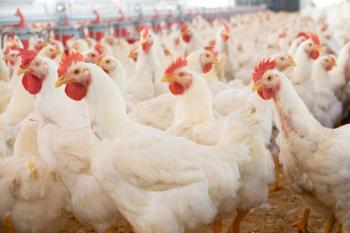
Common diseases of ferrets (Proceedings)
Tumor of the beta cells in the pancreas that secrete excessive levels of insulin.
Insulinoma
Very common in ferrets
Tumor of the beta cells in the pancreas that secrete excessive levels of insulin
Results in hypoglycemic episodes
• Weakness
• Lethargy
• Salivation
• Pawing at mouth
• Seizures
• Difficult to awaken from naps*
Generally malignant with metastasis to the liver, spleen, and other tissues
Presumptive diagnosis based on blood glucose level (<70mg/dl)
More than 1 test: non-fasted and then 4-6 hours fasted
Insulin levels can help to distinguish insulinoma from other causes of hypoglycemia
Definitive diagnosis based on histopathology of biopsy samples taken at exploratory laporatomy
Treatment
Surgical
• Debulk extensive tumor
• "shell-out" suspicious nodules
• Pancreatic lobectomy
• Post-op pancreatitis is rare
Medical
• Dietary management
o High protein
o High fat
o Frequent feedings
o High sugar material on hand and to only be used in a hypoglycemic crisis
• Chromium Picolinate may help in regulating glucose levels
o Found in Brewer's yeast
o 1/8 – 1/4 tsp per ferret 1-2 times per day
• Prednisolone
o Promotes gluconeogenesis by inhibiting glucose uptake by tissues
o Raspberry flavored
o Dose ranges: 0.1mg/kg – 4 mg/kg SID to BID
o Start low then raise as needed to maintain adequate glucose levels
• Diazoxide
o Inhibits insulin release and reduces cellular uptake of glucose
o Used alone or in conjunction with Prednisolone
o Dose : 5-10 mg/kg BID
While insulinomas are rarely cured, most affected ferrets can be reasonably controlled and will often live months to years following diagnosis
Adrenal Endocrinopathy (Key Points)
• Very common in ferrets
• Represented by adrenal hyperplasia, adenomas, and adenocarcinomas
• Usually >3 years of age
• Left more commonly affected than right
• Estrogen is most commonly secreted hormone NOT cortisol
• Carcinomas slow to metastasize
• Diagnosis not easy to confirm
o Endocrinopathy can be useful if the correct tests are performed
- Measure estrogen precursors NOT cortisol
o Ultrasound has been useful but only 50% successful
- Size greater than 3mm wide consistent with enlargement
Clinical Signs
• Hair loss
• Pruritus
• Enlargement of vulva in females
• Loss of muscle mass/ weight loss
• Skin can appear thin or almost translucent
• Pot-bellied appearance
• Aggressive or mating behavior
• Urination difficulties in males
• Enlargement of mammary tissue in either sex
• Sometimes anemia &/or decreased platelets
o Abdominal palpation – can palpate an enlarged adrenal in approx. 1/3 of cases
o CBC, Chemistry panel, Radiographs, and Urinalysis can all be normal – but useful to look at concurrent disease
o Sometimes will see estrogenic bone marrow suppression (anemia – normocytic/normochromic) (leukopenia) (thrombocytopenia)
o Recommend adrenal endocrine panel from Univ. of Tennessee
- Need 0.5cc of serum, frozen, by next day delivery
- Measures cortisol, 17 OH Progesterone, Estradiol, Androstenadione, and DHEAS.
- Cost = $60 + S/H
o Treatment
▪ SURGICAL REMOVAL! #1
• Left much easier to remove
• Right adrenal is close to the vena cava and can encompass this large abdominal vein
• If both removed have to think about steroid supplement
•* Surgical treatment of bilateral adrenal disease by subtotal bilateral adrenalectomy is effective with a low rate of complications and post-operative recurrence rate.
• Cryosurgery**- benefits include dec. bleeding, less intraoperative time, a quicker recovery & technically easier procedure
Medical
Lupron* (leuprolide acetate)– a long acting GnRH analog that stops the stimulation to the adrenal glands therefore decreasing the levels of both sex steroids & androgens
• injectable drug available in 24 hr, 1 mo. depot, 3 mo. depot, and 4 mo. depot.
• No clinical research done on the 24hr, 3mo. or 4 mo. Depot
• *Only research available on the 1 month depot
Dose: * 100mcg/kg IM of the 1 mo. depot diluted
• comes in 3.75mg formulation: dilute to concentration of 500mcg/ml
• can be stored indefinitely at –70C serum freezer or a liquid nitrogen storage.
• possible using regular freezer but drug stability unknown – suspected to be 6 mo.
• 1 vial costs $400 & will treat approx. 35 ferrets
Melatonin* – a natural hormone secreted by the pineal gland.
• melatonin is involved in "activating" (in the spring) & "terminating" (in the fall) the ferret's hypothalmic-pituitary-gonadal axis in response to the seasonal changes in the photoperiod.
• Melatonin inhibits GnRH release, decreases LH and FSH, and ultimately decreases the sex hormone concentrations.
• Dose: 1mg/kg given 8-9 hours after sunrise or 0.5mg PO q 24 hrs
• Implants
Estrogen Toxicity
o Rarely encountered now due to early spaying
o Jills are induced ovulators so remain in heat until bred
o These extended periods of estrus lead to bone marrow suppression & pancytopenia
o Weak, pale, and sometimes shocky, vulva can be swollen and turgid
o Anemia, leukopenia, and thrombocytopenia present
o Treatment: OVH
▪ Human chorionic gonadotropic (HCG) 100 IU once and repeated in 2 week can be given to stimulate ovulation
▪ Transfusion may be necessary
▪ All ferrets have the same blood type
▪ Use whole blood
Lymphosarcoma
o Third most common neoplasia
o Affects ferrets of any age
o Lymphadenopathy is the hallmark of the disease
o Peripheral lymphocytosis may be seen on CBC
o Diagnose with histopathology or cytology
o Treatment
▪ Vincristine
▪ Cyclophosphamide
▪ Prednisolone
▪ Doxorubicin
o Prognosis is guarded although remissions of 3 months to 5 years are reported
Proliferative Bowel Disease
o Same disease that swine and hamsters develop
o Caused by the organism – Lawsonia intracellularis
o Chronic diarrhea is the primary clinical sign
o Partial rectal prolapse is sometimes seen
o Weight loss due to malabsorption
o Young ferrets most commonly affected
▪ 10-16 weeks of age
▪ Nutritional and environmental stressors play a role
o Difficult to culture
o PCR for swine available
o Indirect FA to ID omega antigen in swine, hamsters and ferrets
o Presumptive diagnosis based on signalment & clinical signs and even histopath lesions
o Treatment: Chloramphenicol 50mg/kg BID
▪ Fluids and nutritional support also needed
Helicobacter Gastritis
o Spiral shaped gram – rod bacteria
o Causes gastritis and gastric ulceration
o Clinical signs
▪ Vomiting
▪ Anorexia
▪ Weight loss
▪ Diarrhea
▪ Melena
o Definitive diagnosis based on surgical or endoscopic examination of gastric lining
o Treatment
▪ Amoxicillin 20mg/kg BID
▪ Metronidazole 20mg/kg BID
▪ Gastrointestinal protectants
• Bismuth subsalicylate 1cc/kg BID
• Cimetidine 10mg/kg TID
• Sucralfate 25mg/kg BID
• Omeprazole
• Ranitidine
Epizootic Catarrhal Enteritis
o Unknown viral etiology (coronavirus)
o Affects ferrets of any age but most will have a history of recent exposure to other ferrets
o Often seen following shows, fairs, or in shelter ferrets
o Clinical sign
▪ Green, mucoid diarrhea = "green slime disease"
• Voluminous and sometimes explosive
▪ Can progress to GI ulceration>melena>anemia
o Diagnose based on history and clinical signsNecropsy Findings
o Histopath shows lymphoplasmocytic enteritis with villar atrophy and blunting
o Treatment = supportive care
o High morbidity, low mortality
o Most recover in a matter of 2-4 weeks
▪ More severe in older ferrets with concurrent disease
Influenza
o Ferrets are susceptible to human influenza viruses
o Mild to moderate upper resp. signs seen 48 hours post exposure
▪ Sneezing, nasal discharge, lethargy, anorexia
▪ Biphasic fever spike documented, but usually missed
▪ +/- enteritis
o Disease is usually self limiting and treat symptomatically
▪ 5-14 days duration
▪ Diphenhydramine 0.5-2mg/kg BID
▪ Fluids and Nutritional support as necessary
• Myofasciitis = Disseminated idiopathic myositis (DIM)
o New emerging fatal disease
o Noncontagious
o Progressive and ultimately fatal
o 1 WEEK – MONTHS
o Young adult ferrets (6-18 months)
o Clinical signs
▪ Acute onset of pain
▪ Reluctance to move
▪ Fever
▪ Leukocytosis with mature neutrophilia
▪ Failure to respond to antibiotics & anti-inflammatory meds
▪ Mild non-regenerative anemia
▪ Mild hypoalbuminemia
▪ Mild hyperglycemia
Necropsy Findings
• Gross
• Atrophy of leg & rib muscles with thin diaphragm
• White streaks in muscle
• White splotches in heart
• Red/white mottling of esophagus*
• Entire length
• Check tongue
• Reddened and inc. friability of adipose tissue
• Reddened lungs
• Splenomegaly
• Reddened bone marrow
Histopath
• Necrosis & loss or atrophy of myofibers
• Suppurative to pyogranulomatous inflammation in muscles
• Suppurative to pyogranulomatous inflammation in heart
• Full length, circumferential, full thickness suppurative inflammation in all tunics but mucosa*
• Suppurative inflammation in adipose tissue adjacent to muscle, lungs, mediastinum
• Myeloid hyperplasia in spleen and bone marrow
Cause undetermined
• Bacterial and viral cultures negative
• PCR and immunohistochemistry negative
• Immune mediated?
Treatment
• Many drugs used – unsuccessful
• Combo ?
• Chloramphenicol, prednisone, cyclophosphamide
Newsletter
From exam room tips to practice management insights, get trusted veterinary news delivered straight to your inbox—subscribe to dvm360.





